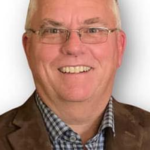For decades now, America has been in the midst of a substance abuse epidemic. In fact, recent Pew research indicates that nearly half of U.S. adults have a close friend or family member who has been addicted to drugs at one point in their life. The experience is so universal that the data set cuts across sex, race, age, education level, and even partisan lines. In short, it’s safe to assume that addiction is as American as apple pie.
Every day, more than 115 people in the United States die after overdosing on opioids. Alcohol abuse has increased by 50 percent since the start of the century, to the point where today one in eight Americans abuses alcohol. According to a 2017 survey, methamphetamine has become the world’s most dangerous drug, as 4.8% of users required hospitalization in order to avoid overdose.
Though substance abuse has become a worldwide phenomenon, affecting millions of people, treatment for addiction is not nearly as universal.Public health officials have drawn attention to the problem in more recent years, yet only 10.9% of individuals who needed treatment in a specialized facility for a substance use or a dependency concern received it in the year 2013.
It’s an epidemic that policy makers, mental health experts, law enforcement, and others are acutely aware of. But solving the problem on a wide scale has so far proven to be fruitless. Individual states have taken specific measures, like opening up safe injection sites, which allow those who struggle with addiction to use in a safe space around medical experts. It’s a solution that definitely won’t solve the addiction crisis, but it does work as a harm-prevention space. Other states have taken to suing the pharmaceutical companies themselves, using similar tactics that were used against “Big Tobacco” nearly twenty years ago.
While these are no doubt necessary and useful tactics that will help presently and in the future (if successful), there are other avenues that largely have yet to be explored. Perhaps the most simple form of aid is given through the Primary Care Provider (PCP).
While all doctors and patients are supposed to share a therapeutic alliance, based on mutual trust and respect, PCPs are in a unique position in the healthcare field. Often, these doctors have known their patients for a number of years, have a big picture view of their overall health over a period of several years, and are able to check in on a patient’s progress with every visit.
Evidence compiled by a University of Michigan medical team suggests that primary care physicians and their teams of nurses, medical assistants, social workers, and pharmacists can–beyond providing basic services that every patient needs–also provide effective care for addiction. Including each of these moving parts not only ensures that the patient is receiving quality care, but also helps to ensure that the patient does not fall through the cracks at any point during their recovery.
They achieve this primarily through the anti-opioid medication buprenorphine and counseling–a combination known as medication-assisted treatment (MAT). The researchers have recently published a peer reviewed paper on the subject, where they posit that this is an effective method of treatment. They do not argue, however, that it is an easy process.
“There is a major need to do this,” says Pooja Lagisetty, M.D., M.Sc., the study’s lead author and a University of Michigan primary care doctor who provides MAT to her own patients at the VA Ann Arbor Healthcare System. “It’s hard to convince primary care physicians to do this work when they’re already busy and they don’t have additional addiction-related training or experience. But if we can learn from others and find a way to offer physicians logistical support, then maybe it’s possible.”
That support must come from other parts of the medical team. As the patient goes through the process, non-physician team members aid with dosing, monitoring the patient, and check-ins by phone and in person. If done successfully, Lagisetty argues, this method can achieve similar results to specialized treatment facilities, and it might reach more people.
“Patients might be more willing to seek help in a primary care setting because of the lack of stigma and the ability to address their other health concerns,” she said. It’s also likely to be less devastating to patients financially. All in all, this kind of treatment in Primary Care facilities makes sense.
While it’s unlikely that primary care physicians pursued medicine with a desire to focus on addiction treatment, it’s a reality that many are going to have to embrace and develop protocol for as the problem persists or worsens.
There are, of course, a number of other solutions that ought be tested as America’s substance abuse problems continue to grow. Addressing the issue at its core will require effort from governing bodies, lawmakers, public health experts, mental health experts, and of course, the healthcare system. Until that happens, collaboration between healthcare providers might be our best bet.













